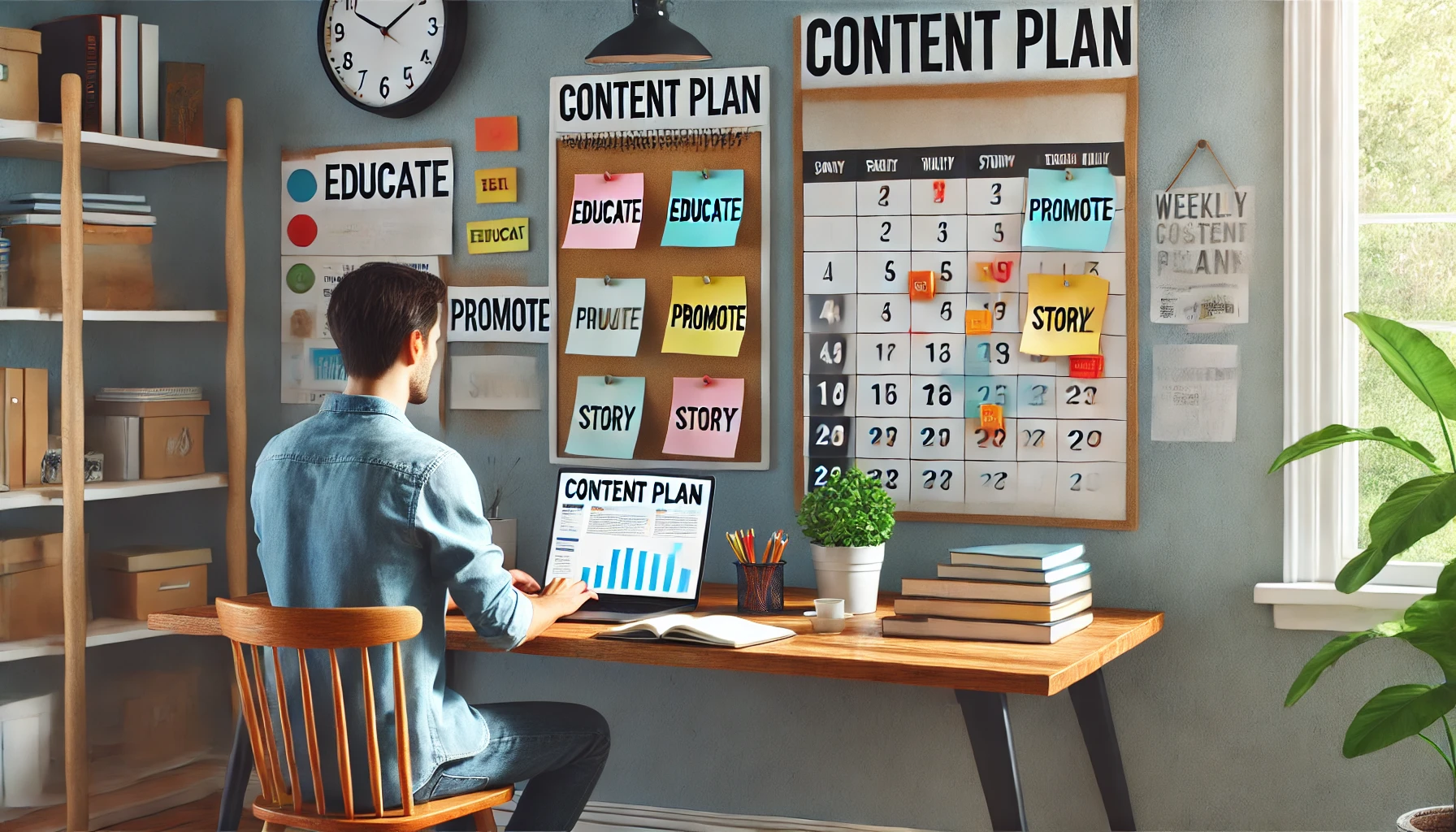Content is one of the most powerful tools you have as a small business owner. It helps you attract new customers, build trust, and stay top-of-mind — all without spending a fortune on ads.
But here’s the catch: without a plan, content can feel overwhelming. What should you post? How often? And how do you stay consistent without burning out?
Let’s build a content plan that actually works — and doesn’t stress you out.
Step 1: Know Your Goal
Before you post anything, ask: What’s the goal of your content?
Common goals include:
- Attracting new followers or potential clients
- Building trust and authority in your niche
- Driving traffic to your website or product page
- Educating your audience about your offer
- Encouraging engagement or feedback
Pick 1–2 primary goals to keep your plan focused.
Step 2: Understand Your Audience
Content only works when it speaks to the right people. Ask yourself:
- Who are you trying to help?
- What are their pain points or desires?
- What questions do they ask before buying from you?
- What kind of content do they already consume?
The better you know your audience, the easier it is to create content that connects and converts.
Step 3: Choose 2–3 Content Pillars
Content pillars are themes or topics you’ll talk about regularly.
Example for a handmade skincare brand:
- Education (skin tips, ingredients)
- Behind-the-scenes (production, packaging)
- Customer stories or results
Example for a freelance writer:
- Writing tips
- Client testimonials
- Personal journey as a freelancer
These pillars keep your content consistent and relevant.
Step 4: Pick Your Main Platform
Don’t try to be everywhere. Start with one or two platforms where your audience is most active.
Popular choices:
- Instagram (great for visuals and short-form content)
- TikTok (great for reach and storytelling)
- LinkedIn (ideal for B2B and service providers)
- Email (best for building deep, long-term connections)
- YouTube (great for evergreen value content)
Choose the platform that matches your style and your audience.
Step 5: Decide How Often You’ll Post
You don’t have to post daily. What matters is consistency.
Start with a realistic schedule:
- 1–3 posts per week on Instagram
- 1 email per week
- 2–3 stories per day (if using IG or Facebook)
- 1 blog post or video every other week
Consistency builds trust — choose a rhythm you can stick with.
Step 6: Use a Simple Weekly Format
Here’s a simple content format to follow each week:
- Day 1: Educational post (tips, how-to, answers)
- Day 2: Storytelling or personal journey
- Day 3: Promotional (talk about your offer)
- Bonus: Testimonial, behind-the-scenes, or FAQ
You can rotate topics and reuse high-performing content later.
Step 7: Batch Your Content in Advance
Batching = creating multiple pieces of content in one focused session.
Try this workflow:
- Pick a day each week to plan (e.g. Monday morning)
- Choose your 2–3 topics for the week
- Write captions and gather visuals
- Schedule using free tools like Meta Business Suite, Buffer, or Later
Batching saves time and helps you stay consistent — even when life gets busy.
Step 8: Use Templates and Repurpose Content
Make your life easier by:
- Reusing old posts with updates
- Turning a blog post into several Instagram captions
- Turning customer DMs into FAQs or tips
- Using Canva templates to speed up visuals
Work smarter, not harder.
Step 9: Track What Works
Each month, review your content:
- What got the most likes, comments, or saves?
- What brought new followers or leads?
- What felt easy or fun to create?
Keep doing more of what works. Let go of what doesn’t.
Step 10: Be Human and Have Fun
Your content doesn’t have to be perfect. What people want is:
- Realness
- Value
- Personality
- Connection
Speak like a human. Use your voice. Show your face. Share your story. That’s what builds trust — and sales.
Final Thought: Simplicity Wins
You don’t need to be a content machine to grow your business.
You just need a simple plan, a little consistency, and a lot of heart.
Start where you are. Talk to your people. Stay consistent. And let your content do the work for you.
Now I’ll generate a realistic image that reflects this article — then we’ll head straight into Article 29: How to Set Up a Basic Sales Funnel for Beginners. Let’s keep it rolling!
